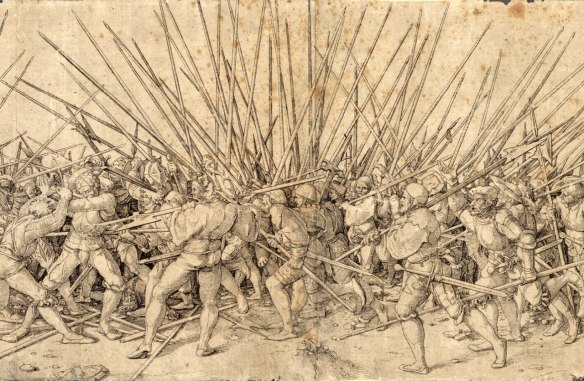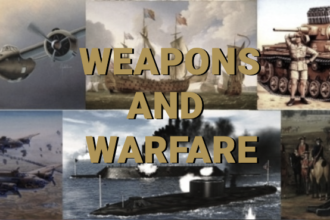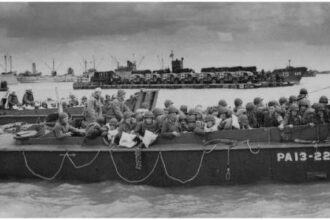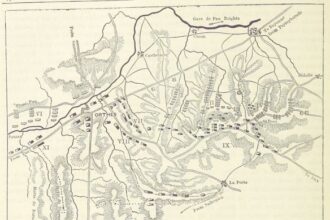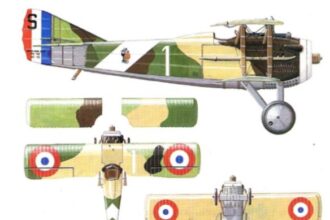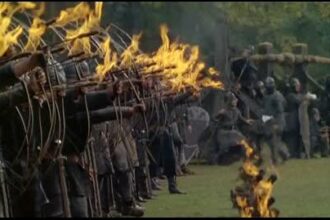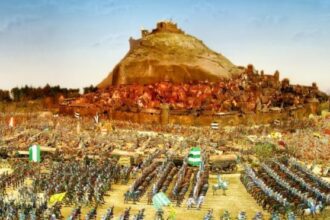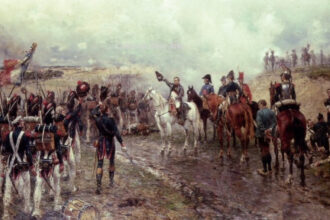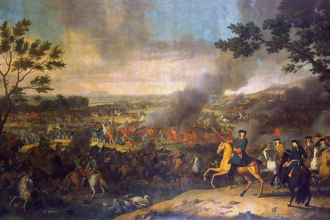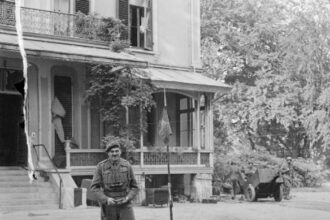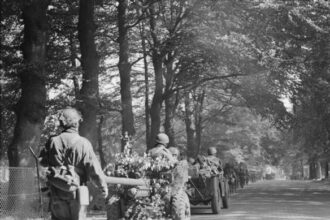Newsletter
Get the latest from Weapons and Warfare right to your inbox.
Follow Us
Explore
Germany-Japan: The Exchange of Strategic Resources
One of the avowed war aims of the Axis powers was to fashion conquered lands and satellites into self-sufficient economic “spheres” that would serve the strategic and economic needs of each master race. During the Second World War, however, neither Germany nor Japan nor any of the wider areas they brought under their temporary control was fully self-sufficient in the…
Wars Involving Landsknechts
Swiss mercenaries and landsknechte engaged in a push of pike (engraving by Hans Holbein the Younger, early 16th century) The War of the League of Cambrai (1508–1516) The War of the League of Cambrai, also known as the War of the Holy League and by other names, too, was a major conflict during the Italian Wars. The chief participants were…
Sicily and Ponza (1813)
Capture of the Island of Ponza Feby 26th 1813. From a plan by Capt Mounsey by Thomas Whitcombe ; Thomas…
Landing Craft
Both the Axis and Allied powers utilized amphibious warfare during World War II, most especially the Allies. Landing craft were…
Battle of Orthez, (27 February 1814)
One of the last battles of the Peninsular War, fought between the French under Marshal Nicolas Soult and the Anglo-Allies…
Most Recent
The magnificent SPAD XIII
The magnificent SPAD XIII was the best French fighter of World War I and a radical departure from earlier design philosophies. Although not as nimble as the lighter Nieuports, the sacrifice in maneuverability was offset by speed and ruggedness. In 1916 the inability of the Societe Pour les Appareils Deperdussin…
INFERNAL FIRE ARROW
The first incendiary missiles were arrows wrapped with flammable plant fibers (flax, hemp, or straw, often referred to as tow) and set afire. Burning arrows of these materials could be very effective in destroying wooden walls from a safe distance. Indeed, Athens was captured by flaming hemp arrows in 480…
Siege of Kulmbach 1553
Diorama of the siege of Kulmbach 1553. The battle is recreated in the German Tin Soldiers Museum in Kulmbach. Margrave Albrecht Alcibiades of Brandenburg-Kulmbach (1522-57) had tried to create a Franconian dukedom for himself at the expense of the Franconian prince-bishoprics Würzburg, Bamberg, Eichstätt and the imperial cities Schweinfurt and…
American snipers
Sgt. Timothy Murphy The earliest American snipers were hunters first, then soldiers. They hailed from the frontier, where long-range shooting was a survival skill. Military muskets of the time were smoothbores, accurate out lo 50 yards or so-adequate for massed volley fire. But in the American wilderness, where one had…
La Guard recule!
Napoleon addresses the Old Guard as it prepares to attack the Anglo-Allied centre at Waterloo. “La Garde recule. Sauve qui peut!” Napoleon did not have much time in which to unleash the Imperial Guard onto the Anglo-Allied line, as von Zieten’s column had already reached the hamlet of Smohain, thereby…
Russia’s victory at Poltava (1709)
Russia’s victory at Poltava (1709) led to the fall of the Swedish empire in northern Europe. Casualty rates in the battles of this period were formidable. At Poltava the Swedes suffered terrible casualties, as their attack on well-defended Russian posit ions exposed them to superior forces and artillery. Only 14…
The Rus’ and the Byzantine Empire
George Majeska The Beginnings Relations between Rus’ and the Byzantine Empire centered at Constantinople (modern Istanbul) were not always friendly. Already in the early ninth century, Viking Rus’ had apparently pillaged the Byzantine city of Amastris on the Black Sea coast of Asia Minor, and by the 830s the Byzantine…
2nd South Staffords – Arnhem Part I
Major General Roy Urquhart shortly after returning to his Divisional HQ at the Hotel Hartenstein, 19 September. The 2nd lift advances into Arnhem where it encounters the German blocking line, 18 September. The 2nd South Staffords, about 420 strong, were brought in from their positions around Wolfheze and at 10.30…
2nd South Staffords – Arnhem Part II
Men of the 2nd Battalion, South Staffordshire Regiment advance toward Arnhem, towing a 6-pounder anti-tank gun with them, 18 September. The 2nd South Staffordshires The main attack on the upper road, by Lieutenant-Colonel Derek McCardie’s battalion along the Utrechtseweg in front of St Elizabeth Hospital, started half an hour late,…
Most Popular
AMPHIBIOUS ASSAULT IN BRITTANY, 1758
British coastal assault on St Cast in Brittany in September 1758. A German map, published…
German Schnellboot (S-boat)
Schnellboot S-80 torpedo boat Camo Operations with the Kriegsmarine S-boats were often used to patrol…
Lend-Lease to the USSR
American Lend-Lease supplies to the USSR 1941–45. Soviet historiography is mocked in the West, where…

